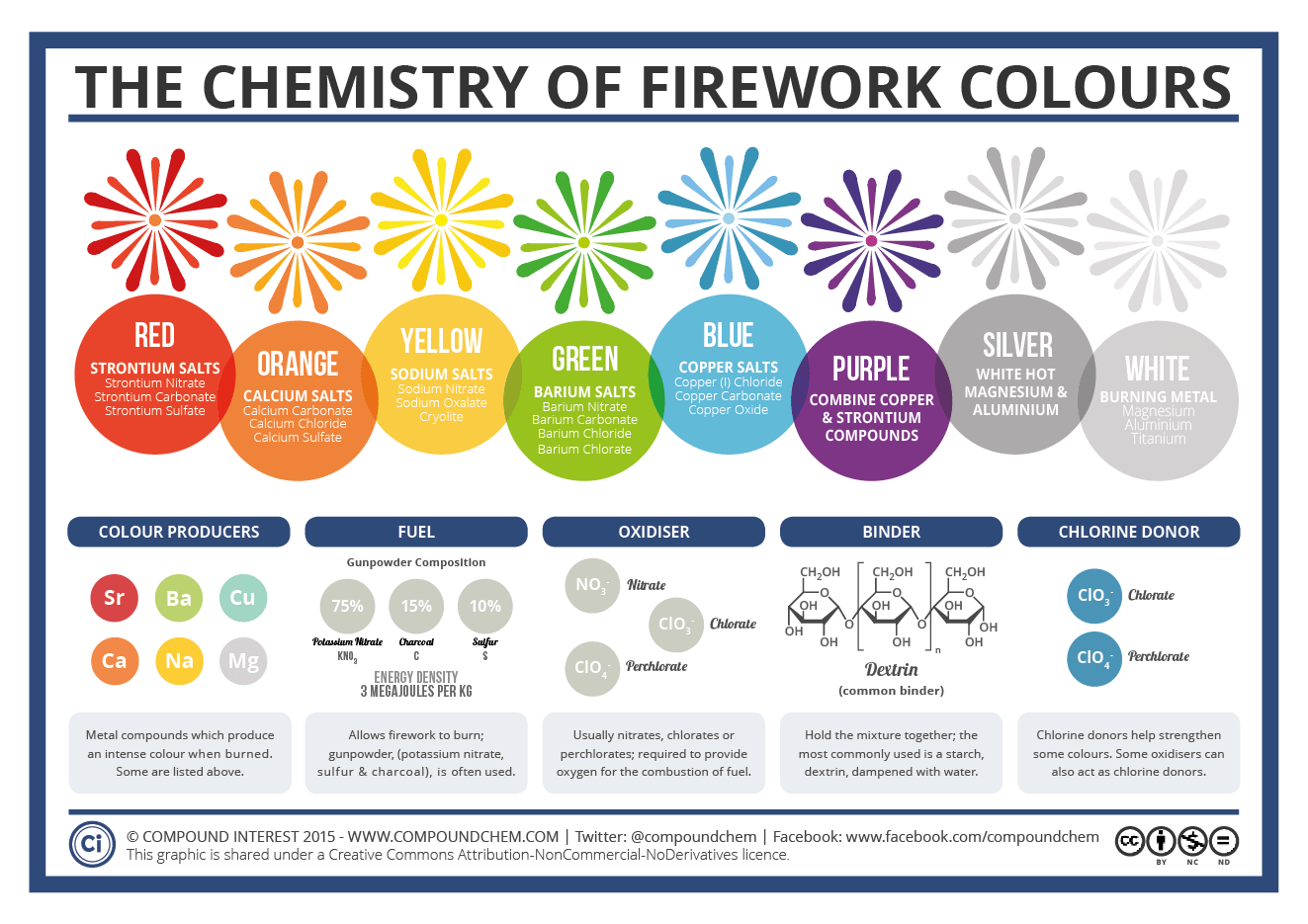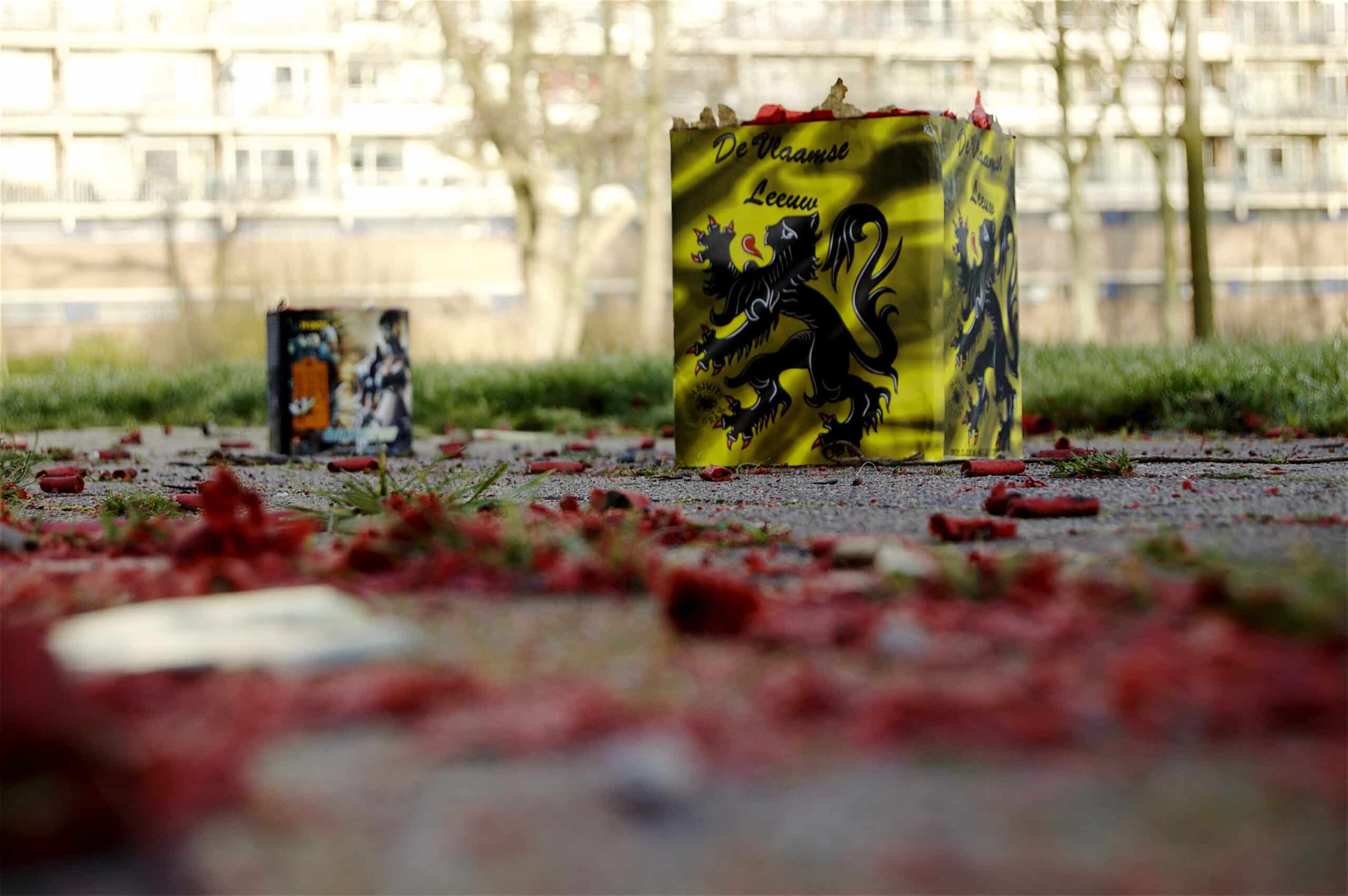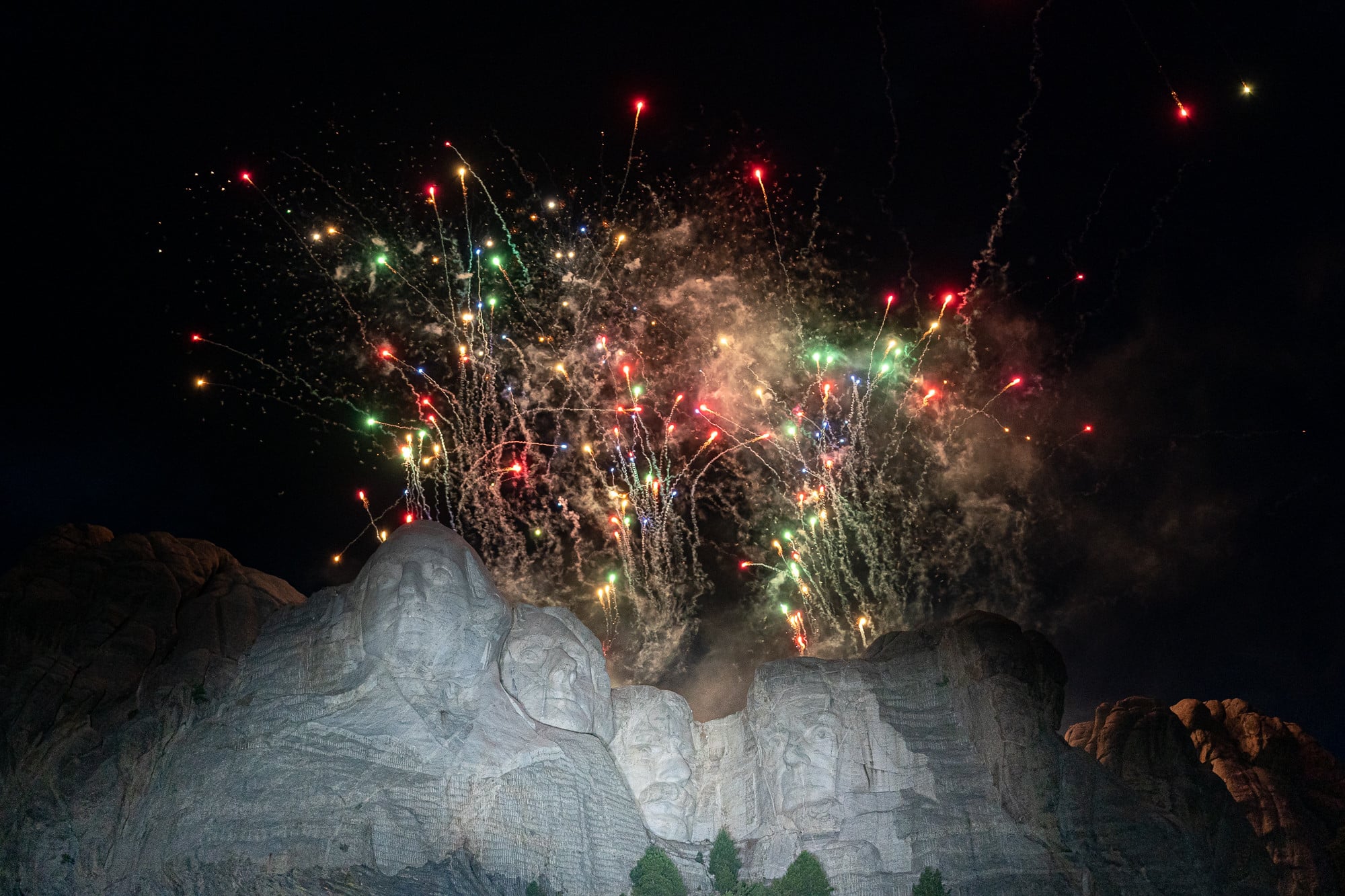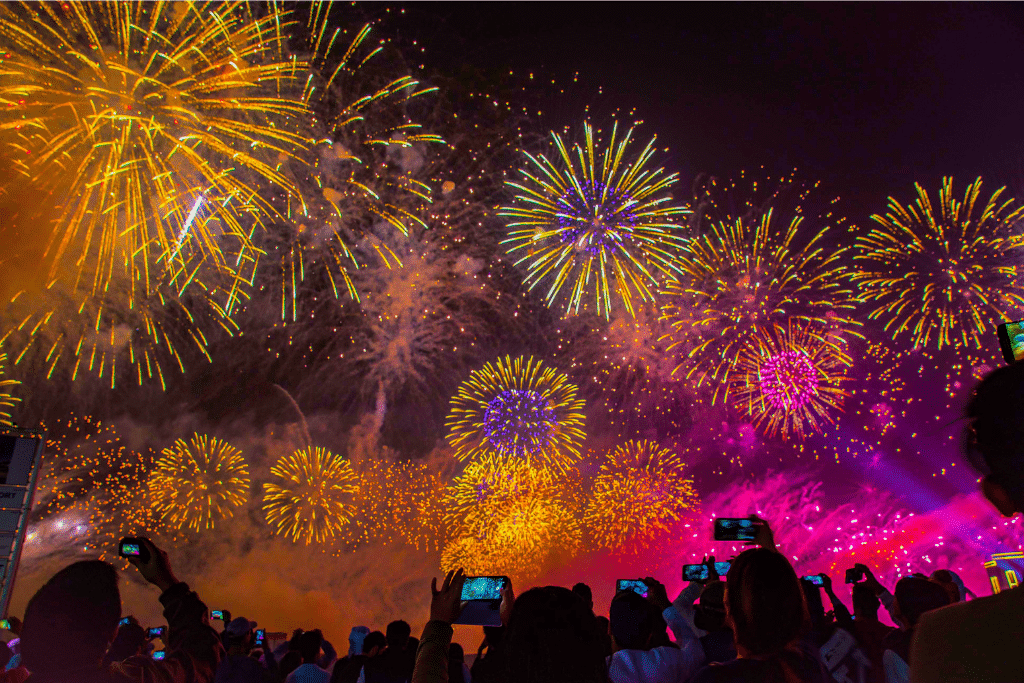Fireworks are used to please crowds, celebrate big holidays, and end festivals with a bang – literally. But at what environmental cost? Especially when climate change has made its way to the forefront of the planet, it is important to consider the environmental impact of fireworks.
—
Society has a growing (and strange) desire to set off and watch explosives for the sake of entertainment and celebratory purposes.
According to the American Pyrotechnics Association, consumer fireworks, which are low-hazard and used for recreational purposes, reached a consumption of 416.3 million pounds in the United States in 2021, while display fireworks, high-hazard and used professionally, amounted to 12.5 million pounds. This totalled an overall American consumption of 428.8 million pounds in 2021, 24.3 million pounds more than in 2020, and 155.8 million more than in 2019.
On the business side, fireworks are a profitable industry where the average retail price for consumers to buy fireworks is about three times the wholesale price. In other words, a consumer buying one case of fireworks for $100 can result in a profit of $300 for the business owner.
Fireworks, as spectacular when displayed and profitable when sold, are a real-life horror show for the environment. Put aside the thought of entertainment and moneymaking for a few minutes because the planet we live on is hurting from fireworks.
What Are Fireworks?
In order to understand the damaging effects a firework has on the environment, it is necessary to first understand what fireworks really are.
The most basic component that all fireworks have is black powder, also known as gunpowder. When black powder – which is made from a mixture of 75% potassium nitrate, 15% charcoal, and 10% sulphur – is placed inside a shell and ignited with a fuse, a loud, gaseous, and hot chemical reaction is created, essentially an explosion.
Exploding black powder does not seem very entertaining to watch, at least not to some. Mineral elements are mixed with black powder, providing colour to these explosions. Some colours simply require one element to produce the targeted colour. For example, only strontium is needed to make red, sodium for yellow, and barium for green. Other colours, such as orange, require a combination of mineral elements which are strontium and sodium, or purple necessitates a mix of strontium and copper. Additional chemicals, such as carbon, sulphur, aluminium, and manganese, are added to the fireworks, functioning as stabilisers, oxidisers, and extra colours.

Trained experts designing and handling fireworks, known as pyrotechnicians, measure the correct amount of black powder, mineral elements, and other chemicals, and arrange these compounds under a specific order to provide the firework with a particular shape and colour. Pyrotechnicians also calculate the altitude of each firework so that explosions happen at the right time and location. After everything is neatly calculated and wrapped together in a shell, a fuse is attached to the shell, and when lit, the chemical mixture reacts with the fuse’s heat, and exploding fireworks ensue.
So now what? Fireworks explode, but where do all these chemicals go? One thing is for sure: what goes up must come down.
Still Up in the Air: The Environmental Impact of Fireworks
Chemicals from fireworks do not just disappear into thin air. When burned and exposed to oxygen, substances undergo a chemical reaction called combustion. This chemical reaction produces two results: Short-lived entertainment and toxic atmospheric pollutants.
The temporary enjoyment of fireworks releases a host of contaminants that affect air quality and can contribute to climate change, including carbon dioxide, carbon monoxide, nitrogen, sulphur dioxide, and particulate matter.
During the five-day celebration of Diwali in India – the world-famous festival of lights – about 50,000 tons, or 100 million pounds, of fireworks explode, causing a toxic haze to cover cities.
Toxic hazes, also known as particle pollution, are created by particulate matter (PM), a combination of minuscule solid and liquid substances found in the air and considered the most hazardous air pollutant due to its ability to affect people’s lungs and heart, along with causing environmental damage. In the case of India, PM found in the country’s air increased up to 35 times on celebration days when fireworks were present compared to normal days.

Specifically, the city of Delhi had the highest amount of particulate matter back in 2017 when fireworks were used during Diwali, with an hourly PM2.5 concentration of 900 μg/m3.
PM2.5 are inhalable fine particles with a diameter of 2.5 micrometers or smaller. The measure (μg/m3) means one microgram of pollutant per cubic metre and micrograms are smaller than milligrams but larger than nanograms. As a comparison, the average strand of human hair is 70 micrometers in diameter, approximately 30 times larger than a fine particle with two-point-five micrometers in diameter.
In the case of Delhi, there were 900 micrograms of fine particles in one cubic metre of air in an hour during the firework-filled festival – a lot considering the World Health Organization air quality guidelines state that the average concentration of PM2.5 should not exceed 5 micrograms per cubic metre of air in a year.
Similar situations occurred in other parts of the world. In central London, for example, a study shows increased particle pollutant concentration during nights with fireworks – all thanks to the toxic elements and metals emitted from firework combustion.
Aside from larger concentrations of particulate matter, firework activity also increases harmful gaseous concentrations, carbon monoxide (toxic by hindering a living organism’s ability to transport oxygen throughout its body), and nitric oxide (toxic by inhalation and skin absorption). The festival of Diwali in India is one example where there was a large spread of these two gases.
Another occasion where there were increases in carbon monoxide, nitric oxide as well as carbon dioxide (CO2) was a firework event organised in celebration of Independence Day on July 4th in the United States. Researchers discovered that, when fireworks took place in downtown Minneapolis, Minnesota, the atmospheric concentration of carbon monoxide increased by 32%, carbon dioxide grew by 17%, and nitric oxide fluctuated a bit before “doubling overnight.”
All these atmospheric pollutants produced by firework activity end up affecting the planet, resulting in changes in air temperature, humidity, air visibility, and other factors. During firework displays, it was found that atmospheric heat content becomes greater, surface air temperature is elevated, and air visibility can decrease as much as 92%.
You might also like: Air Pollution: Have We Reached the Point of No Return?
A Horror Show for Animals
Imagine being an animal, comfortably sleeping in your habitat, and suddenly being awakened by hearing a sequence of booming noises and witnessing unexpected bright flashes out of nowhere, yet unable to escape – a horrifying experience. Unfortunately, this is the reality for many animals.
According to the Humane Society of the United States, animals “become … frightened by the noise and commotion of fireworks,” resulting in them becoming lost, abandoning their habitats, and suffering from health consequences, whether it be stress or getting hit by a vehicle.
A study using GPS trackers conducted in three European countries – Germany, Denmark, and the Netherlands – shows fireworks’ effects on Arctic migratory geese during the New Year’s Eve celebration. The research revealed that the geese flew away from their sleeping sites in response to the fireworks. They never returned.
Likewise, the University of Amsterdam’s Institute for Biodiversity and Ecosystem Dynamics used weather radars to detect how birds, mainly waterfowls, react to New Year’s Eve fireworks. The radars showed that thousands of birds flew up to altitudes of 500 metres in the air after the explosions.
Compared to humans, animals are more sensitive to high-frequency noise, driving them to leave their young and disrupting their breeding and feeding behaviours. The Royal Society for the Prevention of Cruelty (RSPCA) notes that the loud noises emitted from fireworks “are unpredictable and out of an animal’s control.”
“Being unpredictable, as well as intermittent and relatively infrequent, also makes it unlikely that animals will acclimatise to fireworks noise.”
In an extreme case, hundreds of birds, primarily starlings, were found dead on the streets of Rome, Italy, after the 2021 New Year’s Eve firework event. What was the cause of these deaths? The International Organisation for the Protection of Animals (OIPA) believes it to be “related to a particularly loud display of firecrackers and fireworks.”
Aside from deafening noises and disruptive lights, the aftermath of a firework display consists of debris, such as shells and heavy metals, littered across the ground, providing opportunities for animals to accidentally ingest these hazardous materials and potentially leading to illnesses. And it doesn’t stop there.

Fireworks also pose a threat of starting fires – hence the word “fire” in fireworks. In areas already susceptible to wildfires or when conditions are hotter and drier, embers and sparks produced from ignited fireworks have a higher chance of creating a flame that can lead to a destructive wildfire, consequently harming wildlife and their habitats. And while climate change has already increased the risk of longer and more frequent wildfires, fireworks only add to the potential threats. During the 2021 Fourth of July celebration in the US state of Utah, a wildfire started following a firework show in the city of Centerville – an area already prone to wildfires – leading to the evacuation of almost 100 households.
While spectators are left with feelings of amazement and satisfaction, firework displays leave wild animals feelings of trauma and oftentimes injuries. Wildlife rehabilitation centres have increased patients and calls of reported wildlife sightings on roads following firework-filled celebrations.
Bad for Soil, Worse for Waterbodies, Worst for the Ecosystem
It is already established that fireworks pollute the air and traumatise wildlife. What’s next? Ever think about how fireworks harm the planet’s surface and its abundant ecosystems?
Perchlorate, a chemical compound, is often added to fireworks, working as an oxidiser to facilitate their upward propulsion. Though, this chemical can affect the function of the thyroid gland in large amounts. When fireworks burst into their colourful lights, chemical debris is left scattered across the ground. Perchlorate is one of them and it is often associated with contaminating soil and water. This chemical remains in the environment for long periods, easily absorbed by neighbouring flora. When it ends up in waterbodies, it can also affect fish development.
Scientists with the United States Geological Survey (USGS) and the National Park Service studied perchlorate levels associated with fireworks found in soil, surface water, and groundwater at Mount Rushmore National Memorial in the US. They discovered that perchlorate was found in soil where fireworks occurred and where debris settled. There were also increased levels of this chemical in surface water and groundwater because of past fireworks activities nearby.

Similar research took place in Kerala, India, where investigators collected water and soil samples after fireworks were launched. It revealed that both samples had concentrations of perchlorate. It seems that wherever fireworks occur, perchlorate follows.
Chemicals found in soil and water are one problem, but fireworks can also contribute to microplastic pollution in water – plastic particles 5mm in diameter and less. The River of Thames in England had an enormous (and rather shocking) increase in microplastic content following the New Year’s Eve firework show.
“Whilst we expected an increase in microplastics’ presence, we did not expect over a 1000% increase from the sample taken on the 30th December 2019 to the one taken 6 hours after the firework display on the 1st January 2020 roughly 24 hours later,” describes Ria Devereux, one of the researchers of this investigation which took samples of water from the river to examine the concentration of microplastics.
As explained earlier, fireworks release a number of emissions into the atmosphere, including particulate matter, sulphur dioxide, and nitric oxide, to name a few. PM and nitric oxide can stay in the atmosphere for a longer duration, causing these contaminants to be carried over to different regions. When PM, nitric oxide, along with sulphur dioxide, are transported by wind and then mixed with oxygen, water, and other chemicals, acid rain arises. This harms ecosystems, especially ones in aquatic and forested conditions.
Particulate matter from fireworks can land on soil and water as well, altering nutrients in the soil and resulting in surface water becoming more acidic, with severe consequences on ecosystems. Similarly, atmospheric sulphur components, such as sulphur dioxide, are able to damage leaves and disrupt the growth of trees and plants.
A Greener Alternative?
There is no hiding that fireworks are not the best for the environment. The short spectacle that happens worldwide at countless holidays and festivals leaves potent and long-lasting footprints on the planet. Thus, there needs to be a call for change to minimise these effects, especially when climate change is in the limelight.
Some countries have decided to take political routes, implementing policies to reduce the environmental impacts of fireworks.
The city of Zhengzhou in China enforced a policy prohibiting fireworks in 2016 so that air pollution could improve. In 2018, the firework prohibition policy was reinforced, expanding into other regions, which in turn, had considerable improvements in the Air Quality Index, progressing from the category of Unhealthy for Sensitive People to the Moderate one. Besides Zhengzhou, Beijing decided to ban the use of fireworks before the Beijing 2022 Winter Olympics took place. This ban “helped China’s capital record its cleanest air for a Lunar New Year,” as reported by the National Post.

For those who desire firework-related entertainment, greener alternatives are on the rise.
Canadian cities located in the province of Alberta, like Banff and Canmore, replaced fireworks with special effects pyrotechnic displays, which are quieter and have a lower altitude, in order to protect wildlife. The town of Collecchio in Italy also switched from standard fireworks to silent fireworks to help reduce stress on local wild animals. Although these fireworks do not have the traditional loud bang, they still have their colourful and illuminated displays, making them a great and more environmentally friendly alternative.
You might also like: The Environmental Impact of Advertising
Another better option is a drone display, similar to the one presented at the Opening Ceremony of the 2020 Tokyo Olympics. Laser spectacles can replace fireworks, too, as they reduce the risk of wildfires and do not increase air pollution. Salt Lake City in Utah, the United States, has been substituting some of the city’s fireworks with lasers during the Fourth of July holiday to reduce environmental damage, and these lasers still have the same level of spectacle as fireworks.
The government administers many of these policies and greener alternatives. As an everyday person, it may seem challenging to voice just how harmful fireworks are. There is really no need to fret. Even the smallest actions like writing to local government and politicians, spreading information through word-of-mouth or on social media, and signing petitions are all steps towards creating awareness of the impacts that fireworks pose on the planet.
With the slew of problems that climate change bring existing at the front line of this world, it is vital to take all necessary actions to strive for a greener and healthier planet, including taking action on the dazzling but damaging fireworks.
This story is funded by readers like you
Our non-profit newsroom provides climate coverage free of charge and advertising. Your one-off or monthly donations play a crucial role in supporting our operations, expanding our reach, and maintaining our editorial independence.
About EO | Mission Statement | Impact & Reach | Write for us


















